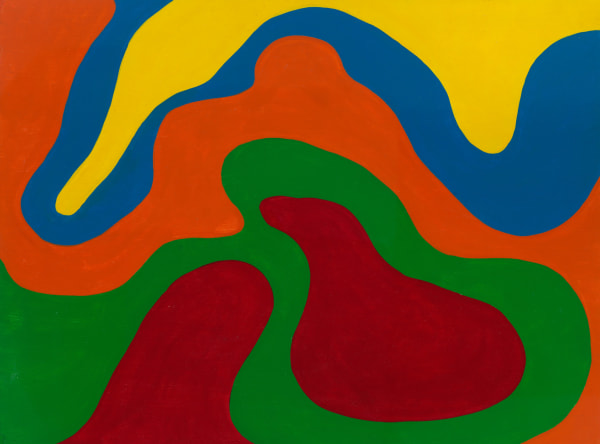Mayoral presents a monographic exhibition dedicated to the Catalan painter, poet and feminist activist Mari Chordà.
This exhibition pays tribute to the artistic career and work of Mari Chordà (Amposta, 1942) with a selection of 14 pieces created between 1962 and 1972. A painter, poet and publisher, Chordà was a pioneer in the visual expression of the female body, female sexuality and the experience of maternity from a feminist perspective. The artist developed her most characteristic and personal art subverting pop aesthetics and influenced by her experience living in Paris.
In the years from 1960-70, for an artist and feminist the commitment was both political and personal. As the curator Chus Martínez wrote: “Chordà’s interest in shape is simply the expression of her passion for life”.
Chordà was a pioneer, painting representations of female genitals for the first time in 1964, when she was still a student and was participating in the revolts against the Franco regime, at a time when the revolution of feminist was just emerging. Her inspiration for the series “Vaginals” (“Vaginal”) arose from the desire to inhabit her own body, to recover it from the patriarchy, exploring taboo concepts of femininity and generating new references. In the present exhibition this series is represented by the works Líquids (Liquids) (1964), Llàgrimes (Tears) (1966), and the seminal 1968 painting Vulva. Chordà used what she describes as a “non-figurative language, somewhere between abstraction and close-up photography”, allowing her to capture her view of her own body from a physiological perspective which only she could have: from the inside out. The resulting images are fluid and suggestive: the artist plays with the relativity between shape and colour, changing our perception and our engagement with our own subconscious while we try to make sense of the anatomical shapes.
On the other hand, two large-format works, Vola, vola (Fly, fly) (1964) and Garriga II (1965) show the importance of her most familiar landscape: the River Ebro and the Montsià. Thus, in Garriga II we observe how she represents the holm oaks of the Sierra del Montsià as a dense material filling with sgraffito spirals inside. “Oval or circular shapes in an incipient organic abstraction, which are embedded on the plane as if they were eggs being incubated in the folds of serene mountain waves” is how art historian Assumpta Bassas describes it in the catalogue of the 2017 exhibition “Llots i torbes”, indicating her interest in the subject of the fecundity and fertility of the land and of the lives of women.
In 1965, she moved to Paris and her palette changed drastically on discovering artists linked to the New Realism and Pop Art movements, especially Niki de Saint Phalle. She found the abundance of colour in the work of this creator to be powerful and convincing, and Chordà reaffirmed her use of increasingly bright and bold colours, which “force you to stop and look at them”. She never formed part of the Pop Art movement and actively sought ways to counteract the voyeurism inherent in many American Pop Art works, which represented women as sex objects.
This aesthetic reached its peak in the playful series “Joguets” (“Toys”), represented here by Colors (Colours) (1969) and Ous de felina (Feline eggs) (1969). These polychrome wood sculptures are inspired by a game for children that she played with her daughter Àngela, in which coloured pieces can be placed in several holes forming different combinations. In the same way as Lucio Fontana’s series “La Fine di Dio” (“The End of God”) represented the infinite and the inconceivable for the Italian artist, with the series “Joguets” Mari Chordà raises the status of these toys to art, placing her role as mother and creator literally at the centre of her practice, and figuratively in the hands of her daughter.










